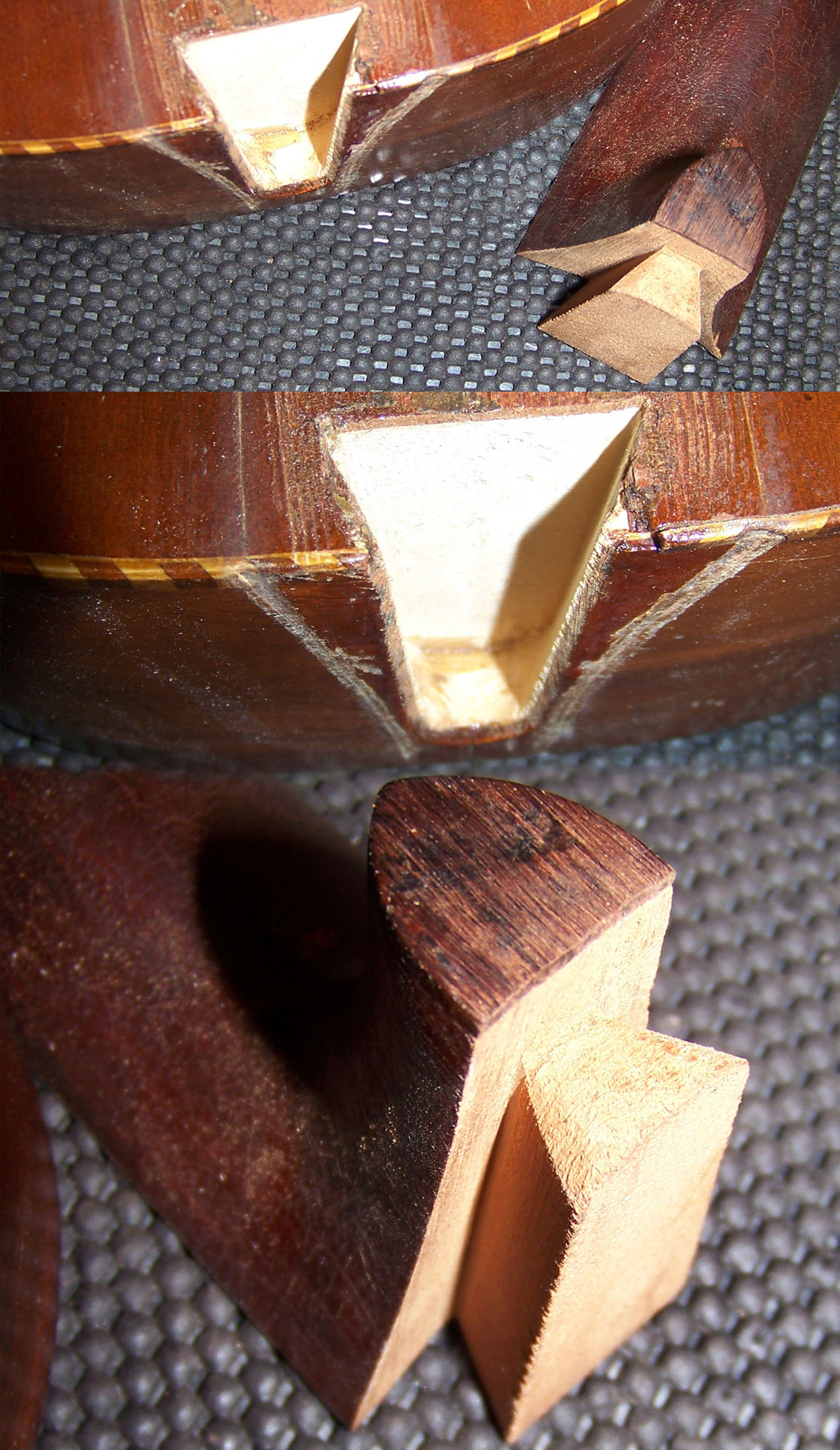 Preface pt. 2:
Preface pt. 2:
Unwinding those strings sure made my fingers hurt! Can't be rusty tuners, they are brass, must be a quality thing.
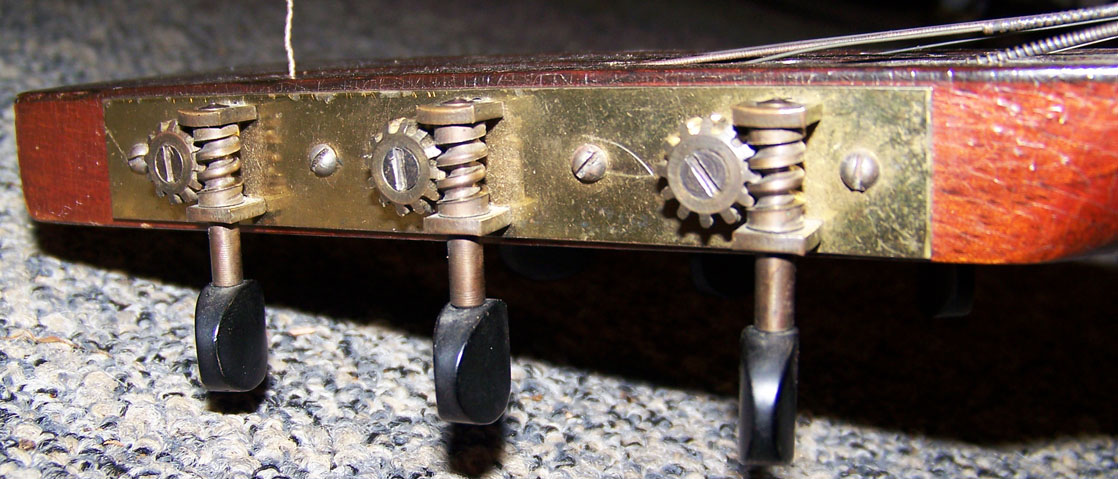
Dang, the lacquer looks something awful. Is that one of those crackle finishes?
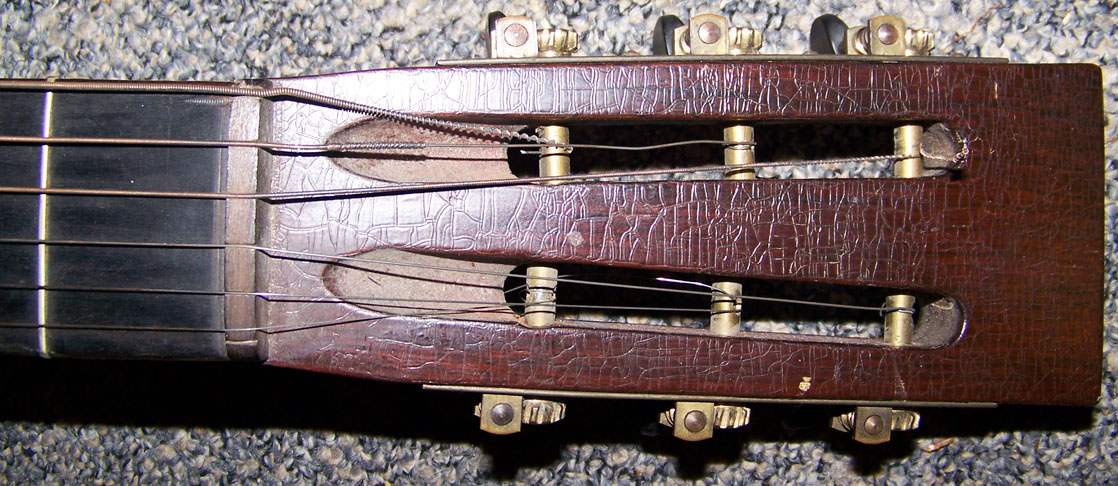
The back doesn't look much better either. Thank god the tuning knobs survived! They almost look unused, probably are.
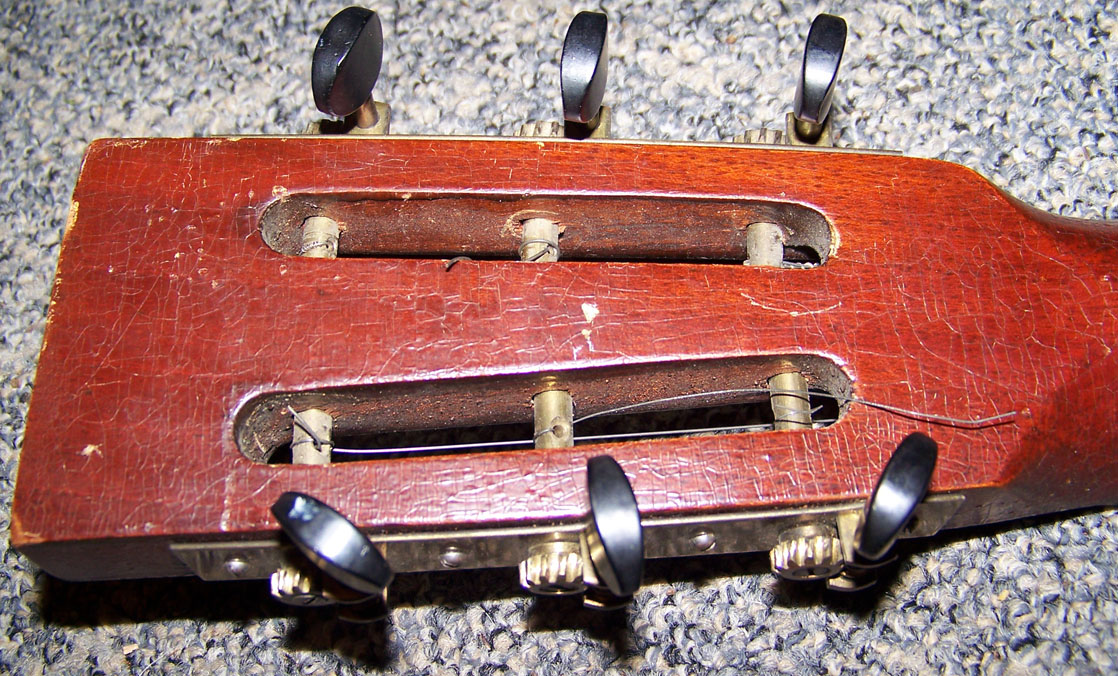
Then again, looking at the back of the neck, maybe it was used. Well whoever did needed to wash their hands more often!

 Analogy:
Analogy:
So now I am stumped, because even though this guitar needs repair because it is aged, it really looks like there is more to the story. My client had bought it at an antique dealer who tried to charge her a whopping $90 for it, and she talked them down to $80. They must have thought they had a real gem on their hands. No wonder those places are going out of business in droves! Take another look: Recognize the brand?
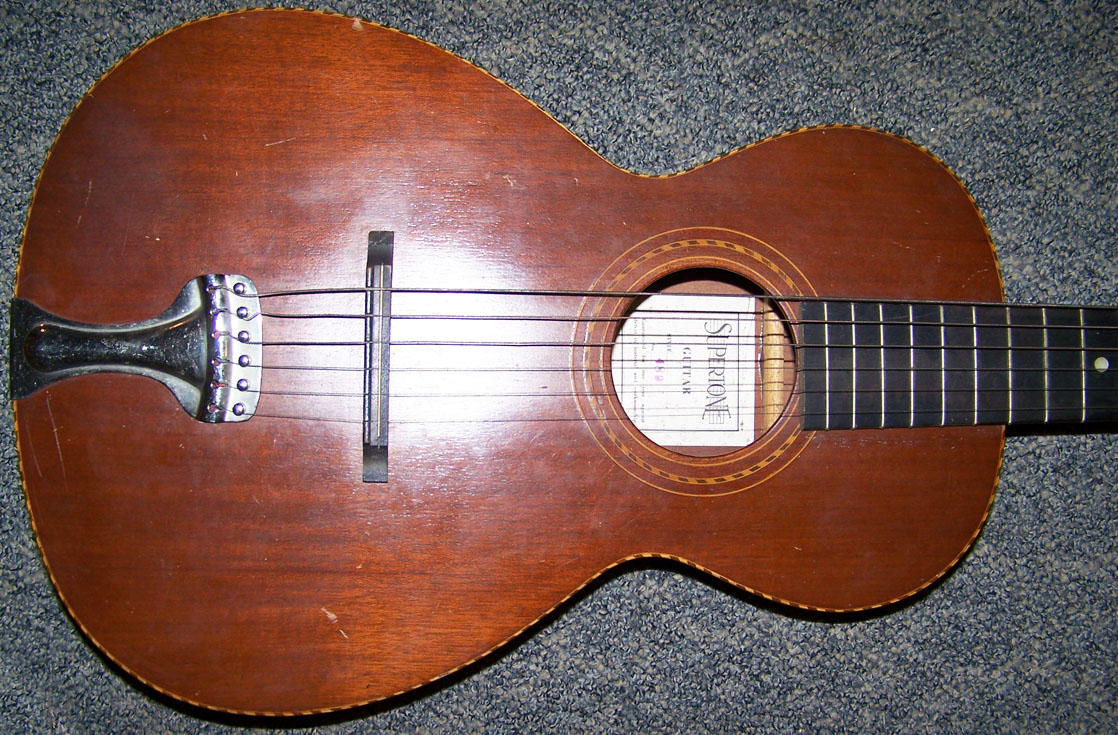
It's a Supertone, the kind that Sears Roebuck and Co. used to sell for cheap. Not only was it cheap to begin with, but I am almost certain this one never left the factory in a box to end up on a sales floor. Why do I say that? Well everything is off center as already shown, and although the sides were cut book matched one was flipped around. On one side, there was a small gap between the side and the back, where a protruding brace was not cut down before gluing, and the two were forced together to where the edge lining was busted out. These guitars as cheap as they were, still had quality control,and the factory made more expensive models too. I must assume that it may have been made by a luthier in training, and it slithered out the back door, instead of being scrapped.
There is no model name or number on the label inside the sound hole. at serial No. 489, I have a hard time believing that they made them all bad until they finally got it right at about No. 984!
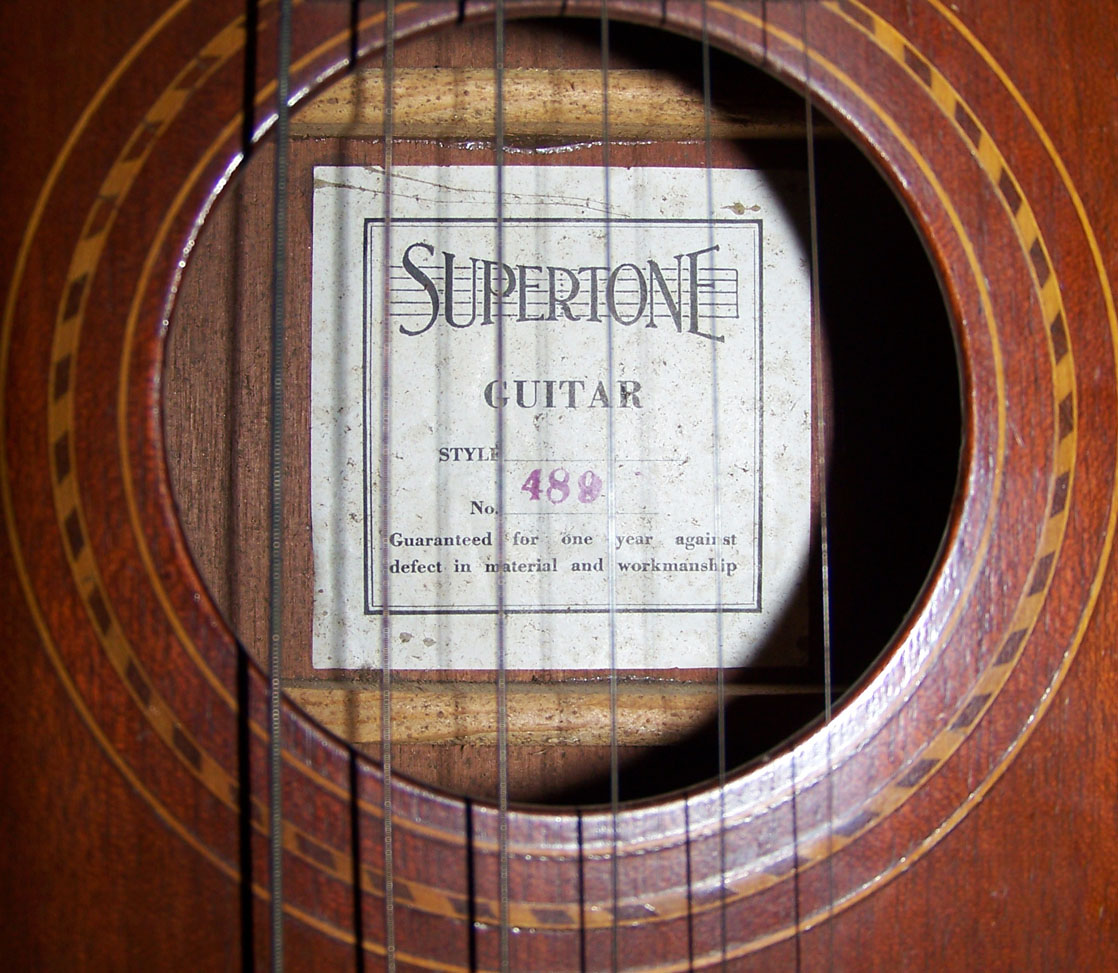
I did a little research though. OK, so I had to do a lot of research to name and date this one. It turns out that 489 is not the serial number, but the model number "AKA The Entertainer", and since they kept making near identical guitars through the years, but kept changing the model names and numbers, everything I could find points to 1927 as the year of manufacture. It was made by harmony in Chicago, not by Kay, and they had other versions of the same guitar, with different stenciled artwork on them. A Hawaiian motif, one with a cowboy... Sears went back and forth with their suppliers, and it being found around Niles Michigan, fairly close to Chicago makes sense, and adds to my suspicion that it was not sent to some Sears store.
 The build pt. 1:
The build pt. 1:
Time to get crackin' and rebuild this thing. In this case so much needs to be done, that I can take my pick on what to begin with, and since th neck and fingerboard were almost off, they came first. I started by prying the fingerboard off, and was prepaired to give it the heat treatment, but it popped right off with the slightest pressure.
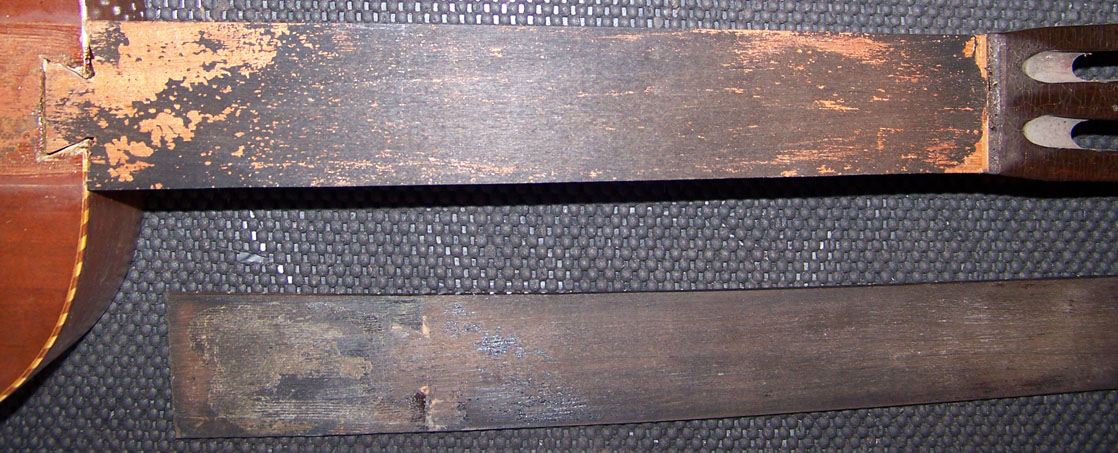
I then discovered a way less than perfect neck joint. I wiggled it around, as it was loose, and it too came out without a hitch.
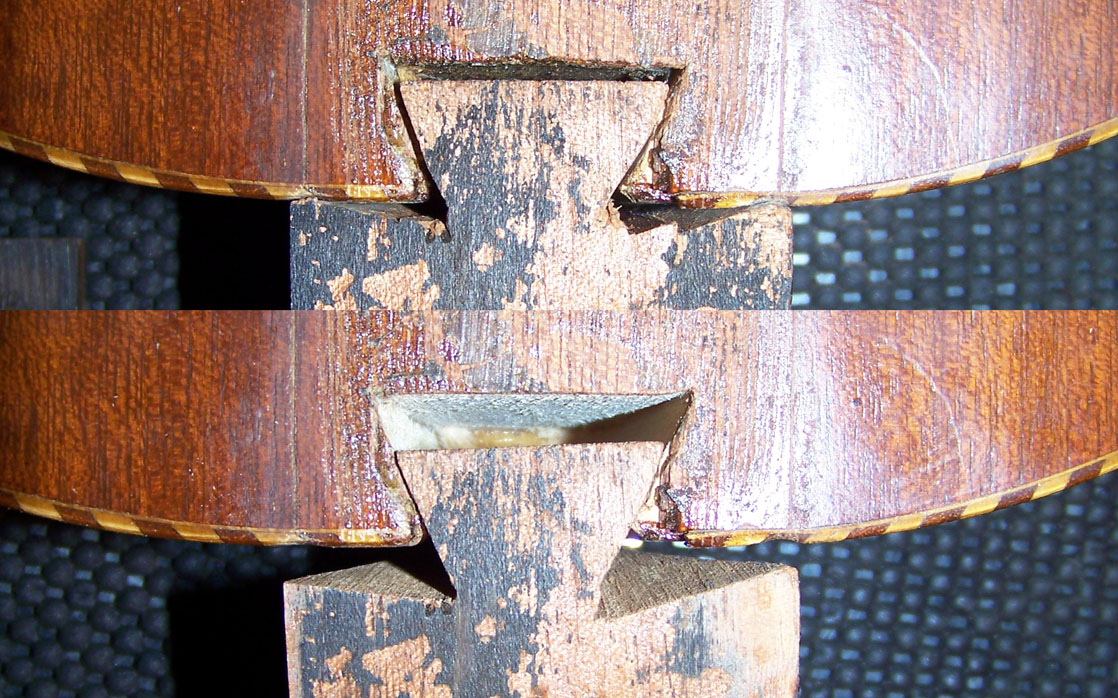
After cleaning the residual glue out, it was apparent just how large the gaps were. Here is a picture with the neck off completely and most of the dry chunks of glue removed:
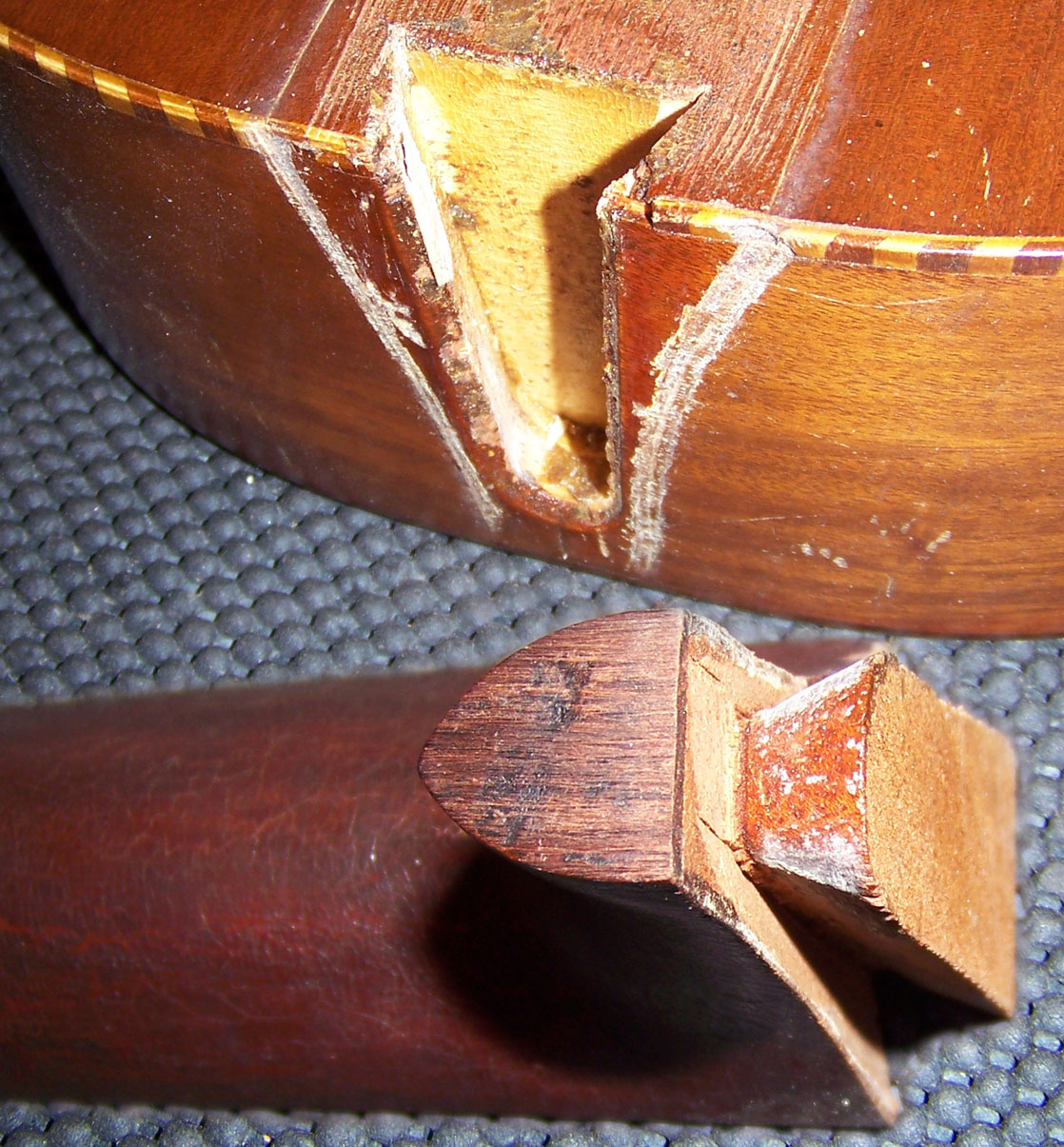
Of course I had to get rid of all traces of the old glue, as well as straighten out the surfaces, and the dovetail.
